Science Highlights, February 19, 2014
Awards and Recognition



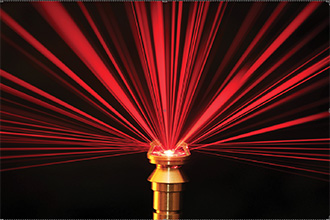
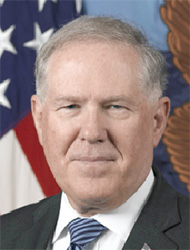
- Michael Fitzsimmons elected Neutron Scattering Society of America Fellow
- Quanxi Jia selected as a new Materials Research Society Fellow
- Former Rosen Scholar Markus Roth made an American Physical Society Fellow
- Gary Grider named one of HPCwire’s people to watch for 2014
- Gemini Team wins Secretary of Energy Honor Award Citation
- DoD acquisition chief praises team for TATB production achievement
Awards and Recognition
Michael Fitzsimmons elected Neutron Scattering Society of America Fellow
In recognition “for many important contributions to the study of interfacial and thin-film magnetism using polarized neutron reflectometry.” Michael Fitzsimmons (Lujan Center, LANSCE-LC) joins the 2014 class of Neutron Scattering Society of America Fellows.
Fitzsimmons is the Asterix instrument scientist at the Lujan Neutron Scattering Center. In 2001 he garnered a Distinguished Performance Award for single-handedly designing and building Asterix, a polarized neutron reflectometer/diffractometer. The instrument incorporates novel neutron optical concepts to polarize a large, pulsed neutron beam, something the neutron-scattering community had considered difficult to accomplish. Asterix supports studies of the magnetism of thin films and magnetic nanostructures and has produced interesting results related to the magnetic structure of new spintronics devices.

Michael Fitzsimmons
After receiving his PhD in materials science and engineering from Cornell University, Fitzsimmons performed research in München, Germany as a Fulbright Jr. Research Fellow. He later joined Los Alamos as a Postdoctoral Fellow and became a staff member in 1993. In 2006, Fitzsimmons was named an American Physical Society Fellow for achievements using polarized neutron reflectometry. He also serves on the Board of Directors for the Materials Research Society as Treasurer.
Formed in 1992, NSSA has more than 1,000 members from 26 countries. No more than one-half of one percent of members are honored as NSSA fellows annually through election by the NSSA Fellowship Committee. Technical contact: Michael Fitzsimmons
Quanxi Jia selected as a new Materials Research Society Fellow
Quanxi Jia (Center for Integrated Nanotechnologies, MPA-CINT) has been honored as a 2014 fellow of the Materials Research Society (MRS) for his “pioneering contributions to the development of high-temperature superconducting-coated conductors and for advancing the processing and application of multifunctional metal-oxide materials.”
Jia is the Thrust Leader of Nanoscale Electronics and Mechanics at the Center for Integrated Nanotechnologies (CINT), which is jointly operated by Sandia and Los Alamos National Laboratories. He specializes in the synthesis of nanostructured materials, multifunctional materials, and thin films, the development and fabrication of high-temperature superconducting films, and the exploration of novel solid-state microelectronic devices based on semiconductor and multifunctional materials. He has conducted pioneering research in high-temperature superconducting coated conductors, novel techniques to grow thin films of electronic materials, and monolithic integration of complex metal-oxide thin films for novel devices. Some of his important contributions include the development of multilayer architectures to enhance the supercurrent-carrying capability in thick superconducting films, polymer-assisted deposition to grow a wide range of electronic materials, and integration of metal-oxide materials with complementary functionalities for electronic devices.
Quanxi Jia
MRS is an organization with more than 16,000 materials researchers from academia, industry, and government. It promotes the advancement of interdisciplinary materials research to improve the quality of life. The MRS Fellow program recognizes outstanding members whose sustained and distinguished contributions to the advancement of materials research are internationally recognized. The number of new fellows selected annually is capped at 0.2% of the current total MRS membership. Technical contact: Quanxi Jia
Former Rosen Scholar Markus Roth made an American Physical Society Fellow
Markus Roth, a former Rosen Scholar at the Los Alamos Neutron Science Center (LANSCE), has been inducted into the 2013 class of American Physical Society (APS) Fellows, Division of Plasma Physics. The APS cited him “for outstanding experimental contributions in laser-produced proton and deuterium beams, and their application to fast ignition and neutron beam generation.”
Roth, a distinguished professor of physics at Germany’s Institut für Kernphysik, Technische Universität, came to LANSCE in 2012 under the Rosen Scholar fellowship aimed at attracting visiting scholars in the fields of nuclear science, materials science, defense science, or accelerator technology. Roth and LANSCE and Physics Division researchers used ultra intense lasers to research novel, compact, high-brightness sources of neutrons.
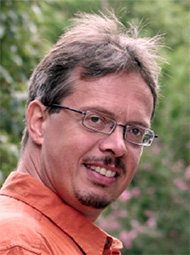
Markus Roth
He was part of an international team that used the Lab’s powerful 200 trillion-watt short-pulse laser system, TRIDENT, to create the largest neutron beam ever made by a short-pulse laser. They focused high-intensity light on an ultra-thin plastic sheet infused with deuterium. “So far only at TRIDENT has this new plasma acceleration mechanism been successfully implemented,” Roth, the first author on the paper, said in a Los Alamos news release at the time. Five times larger than the previous record and requiring less than a quarter of the laser energy, this record neutron beam has the speed and energy range that makes it an ideal candidate for radiography and a wide variety of high energy density physics studies. LANL selected this achievement as one of its top science news stories for 2013.
APS Fellows are selected for exceptional contributions to the physics enterprise. This honor signifies recognition by professional peers. APS represents more than 50,000 members, including physicists in academia, national laboratories, and industry in the U.S. and the world. Technical contact: Alex Lacerda
Gary Grider named one of HPCwire’s people to watch for 2014
HPCwire has honored Gary Grider (High Performance Computing, HPC-DO) as one of its “People to Watch” for 2014. Every year, HPCwire’s People to Watch recognizes the most influential people in the high performance computing industry. These leaders are on the forefront of technology and are steering the industry in new directions; directions that not only effect the high performance computing (HPC) industry but also people in their every day lives.
Grider was picked in part for his leadership of the division that will install Trinity, LANL’s newest HPC machine, which is scheduled to be installed in 2015. The system has a very large memory allowing scientists to solve nuclear weapons stockpile problems. The goal is to run the Lab’s applications many times faster and with many times more resolution. The system has a number of firsts. Trinity will be the first big machine to have a burst buffer on it, a concept that Los Alamos developed. The machine will have active power management for power capping and adjusting power based on the need. This will be the first time that LANL has purchased a machine jointly with Sandia National Laboratory and NERSC (National Energy Research Scientific Computing Center – a DOE Office of Science Facility). Additionally, Grider is a significant player in the DOE Exascale related activities.
Gary Grider
Grider received a B.S. in Electrical Engineering from Oklahoma State University and a M.B.A. with emphasis in Management Information Systems, Statistics, Physics, and Mathematics also from Oklahoma State University. He joined Los Alamos as a contractor in 1989, and then became a LANL employee in 1999. Currently, Grider is the Lab’s High Performance Computing Division Leader.
In other HPC work at Los Alamos, Grider conceived of the idea to donate LANL supercomputing sanitized decommissioned hardware to the New Mexico Consortium. The Parallel Reconfigurable Observational Environment (PRObE) facility enables large-scale systems research, including hands-on operation of very large compute resources for research in storage, networking, resiliency, big data, and other data-intensive applications.
HPCwire is a news and information resource covering the fastest computers in the world and the people who run them. To view the full HPCwire article: http://www.hpcwire.com/people-watch-2014/
Gemini Team wins Secretary of Energy Honor Award Citation
The DOE has selected the Gemini Experimental Series Team to receive a Secretary of Energy Honor Award for its outstanding and remarkable contributions to the Nation’s Stockpile Stewardship program. The team successfully met the tasking of the NNSA’s Deputy Administrator for Defense Programs Don Cook to “develop improved scientific understanding of plutonium behavior, provide data to evaluate integrated models, and challenge the design and production capabilities of the Nuclear Security Enterprise.”
Gemini’s research and development challenges to meet the schedule imperative set by the tasking were legion, and the team demonstrated the importance of modern Stewardship tools. Examples include:
- Physics modeling: Advanced Simulation and Computing (ASC) codes to design the Gemini experimental series, inform the design requirements for the diagnostic systems, and prepare for pre-shot and post-shot analyses of previously unattainable data; 3-D code for hardware design and safety analyses; Composite Velocimetric Comparison Approach for analyzing data
- Diagnostics: Novel high-density and high-bandwidth photon Doppler Velocimetry (PDV) optical dome probes using 21st century metrology and multiplexing technologies
- Fabrication: ASC fluid flow code to understand plutonium casting and to design the plutonium molds; Development of processing and modeling for high-precision fabrication, handling and inspection of scaled components at LANL and at the Plants
- Engineering: Construction methodology and ASME Code Case first developed by LANL’s DynEx Program for impulse-loaded vessels; Establishment of a commercial vendor for confinement vessels fabricated to rigorous requirements

Photo. Dime-sized optical probe used to measure velocities of the Gemini implosion.
The transformational technologies that were developed, as well as the improvements to dual-axis Cygnus radiography in U1a, were unexpected when Gemini was first formulated in April 2011. These technologies will have an enduring impact on the design, data quantity, quality, and analyses of all future weapons experiments. Data from the integral experiments have already informed Primary Design Codes and provided important data for the Predictive Capability Framework Community.
Superior project and risk management, as well as operational, safety, and security discipline, the application of graded quality, and informed decision-making were essential. These achievements culminated in the on-schedule execution of the integral Castor Confirmatory and Pollux Sub-Critical Experiments in U1a at the Nevada National Security Site. Moreover, Gemini costs were ~ 85% of the original estimate made by the multisite partners Los Alamos, National Security Technologies, LLC (NSTec), Sandia National Laboratories (SNL), and the Kansas City Plant.

Photo. View of the dual-axis Cygnus radiography sources and the U1a experimental room containment bulkhead.
The Gemini Experimental Series Team includes Jeffrey Paisner (Weapon Engineering and Experiments, ADW), Christopher Romero and Timothy Fife (Experimental Projects Office, W-EPO), Gary Wall and Garry Maskaly (Primary Physics, XTD-PRI), Michael Furlanetto (Neutron Science and Technology, P-23), Jeffrey Hylok (B61-12 Life Extension Program, W-15), Debra Johnson (Manufacturing Science and Engineering, MET-2), Raffi Papazian and James Gatling (NSTec), and Bryan Oliver (SNL).
NNSA funded the work, which supports LANL’s Nuclear Deterrence mission area and Materials for the Future, Science of Signatures, and Information, Science, and Technology science pillars. Technical contact: Jeffrey Paisner
DoD acquisition chief praises team for TATB production achievement
Under Secretary of Defense for Acquisition, Technology and Logistics Frank Kendall congratulated a multi-institutional team, including members of Los Alamos National Laboratory, for establishing a production source of triamino-trinitrobenzene (TATB), an explosive used in missile and artillery warheads as well as bombs.
With stockpiled TATB nearly depleted, the Department of Defense (DOD) urgently needed this material, which had not been produced domestically for almost 10 years. The Holston Army Ammunition Plant now manufactures TATB in an innovative process at a new facility designed, built, and operated by BAE Systems Ordnance Systems. TATB booster formulations for PBXN-7 and PBXW-14 have fulfilled all requirements.

The collaboration involved the U.S. Navy, Army, Air Force, Office of the Secretary Defense, Department of Energy, and industry partners. NNSA Directed Stockpile Work, the Joint DoD/DOE Munitions Program, and the NNSA Science Campaigns funded the work, which supports the Lab’s Nuclear Deterrence and Global Security mission areas and the Materials for the Future science pillar. Technical contact: Eric Brown
Bioscience
Analyzing the human microbiome through metagenomics sequencing
The human body is inhabited by millions of microorganisms, which play a fundamental role in human health and disease. These microbial communities are often interdependent. Therefore, studying them requires special tools. One of these tools is metagenomics sequencing. This technology allows DNA sequencing directly from the environmental sample, which often contains millions of different microorganisms. The key difference between metagenomics and a conventional microbial genomics is the fact that metagenomics bypasses the requirements for pure microbial cultures and allows a discovery of the genomes from the whole communities rather than individual populations. Metagenomics could enable the generation of hypotheses concerning interactions between members of the microbial communities. Teasing out the sequence of one individual community member from this pool of data is still a great challenge. Scientists use “reference genomes”, nucleic acid sequence databases that represent example of a species’ set of genes. In this case these are created by combining multiple sequences of the same organisms found in a specific part of the human body.
To illustrate the utility of reference genomes when studying more complex metagenomes, a team of researchers from Bioenergy and Biome Sciences (B-11) has performed a reference-based analysis of sequence reads generated from 55 shotgun metagenomes, selected from 5 major body sites, including 16 sub-sites. Between 13% and 92% (62.3% average) of these shotgun reads were aligned to a then-complete list of 2780 reference genomes, including 1583 references for the human microbiome. No reference genome was universally found in all body sites. For any given metagenome, the body site-specific reference genomes, derived from the same body site as the sample, accounted for an average of 58.8% of the mapped reads. While different body sites did differ in abundant genera, proximal or symmetrical body sites were found to be most similar to one another. Despite gross similarities, it is clear that the human microbiome varies by body site, as well as by individual when studying identical sites, and that small spatial as well as temporal variations can exist even within individuals. The extent of variation observed, both between individuals sampled within the same microenvironment, or at the same site within the same individual over time, calls into question comparative studies across individuals even if sampled at the same body site (Figure 1). This study illustrates the high utility of reference genomes and the need for further site-specific reference microbial genome sequencing, even within the already well-sampled human microbiome.
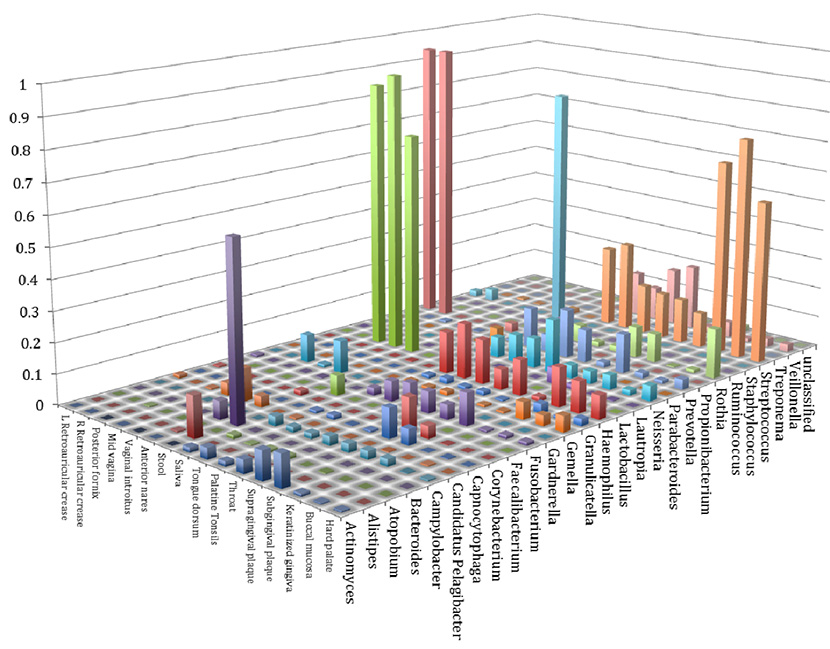
Figure 1. Genus-level community composition of the human microbiome per body site. Genus-level abundances were examined for genera whose reference genomes accrued >0.025 (2.5%) of the mapped reads from at least one sample. Various genera are represented on the y‐axis and different human body/sub-sites are listed on the x‐axis. The ratios of genus-level mapped reads from 14 individuals are represented by the height of the columns along the z-axis.
Reference: “Recruiting Human Microbiome Shotgun Data to Site-Specific Reference Genomes” PLoS ONE 9 (1): e84963 (2014); doi: 10.1371/journal.pone.0084963. The Los Alamos team includes: Gary Xie, Chien-Chi Lo, Matthew Scholz, and Patrick Chain (B-11).
The National Institutes of Health (NIH) and the DOE - Office of Science, Joint Genome Institute funded the work, which supports the Lab’s Global Security mission area and the Science of Signatures science pillar. Technical contact: Patrick Chain
Capability Enhancement
Atomic Physics Project delivers iron opacity table
Los Alamos researchers delivered and validated an iron opacity table, a significant step towards replacing the Lab’s legacy low-Z (Z is atomic number) opacity code LEDCOP (Light Element Detailed Configuration OPacity) with LANL’s new opacity code ATOMIC (Another Theoretical Opacity Modeling Integrated Code). Scientists developed the ATOMIC opacity code to produce a more accurate and complete set of opacity tables in temperature and density space as compared with the LEDCOP legacy code. An opacity code calculates atomic cross sections that are used in the modeling of radiation transport.
LANL’s goal is to calculate tables of the heaviest and most complex elements within the low-Z series (elements hydrogen through zinc, 1 ≤ Z ≤ 30). Researchers have already computed several of the lowest-Z tables (Z={1-10, 12, 13,14}) with ATOMIC. The generation of the iron (Z=26) opacity table marks the completion of an assessment to verify the adequacies of the current physics models in ATOMIC. Scientists have validated iron opacity spectra against experiments performed at Sandia National Laboratories’ Z-facility. The spectral data reveal remarkably good agreement. Researchers expect to complete the entire series of the new low-Z tables in 2015.

Figure 2. Comparison of iron transmission spectrum between experiment and theory. The experimental curve (red) was measured at the Sandia National Laboratories’ Z facility, and the theoretical curve (blue) was calculated with the LANL opacity code ATOMIC using the mixed unresolved transition array (MUTA) approach. The calculation was performed using the local thermodynamic equilibrium (LTE) approximation, at a temperature of 160 eV and electron number density of 1.5 x 1022 electrons/cm3. The excellent agreement between the two curves provides confidence that LANL’s theoretical approach is valid under these conditions, particularly in light of the fact that there are not many experimental results with which to compare. Opacities contained in the recently completed iron opacity table, which was obtained using a more rigorous approach and which includes a broad range of temperatures and densities, show similar good agreement with the experimental curve for the stated conditions.
The team included James P. Colgan, David Kilcrease, Norman H. Magee, Jr., Gregory Armstrong, Joseph Abdallah, Jr., and Manolo Sherrill (Physics and Chemistry of Materials, T-1); Christopher J. Fontes, Peter Hakel, and Honglin Zhang (Materials and Physical Data, XCP-5).
The Physics and Engineering Models Project, an element of the Advanced Simulating and Computing (ASC) Project, funded the work. The Advanced Simulation and Computing Program is a NNSA collaborative program among Lawrence Livermore, Los Alamos, and Sandia national laboratories to ensure the safety and reliability of the nation's nuclear weapons stockpile. The work supports LANL’s Nuclear Deterrence mission area and the Nuclear and Particle Futures science pillar. Technical contact: Christopher J. Fontes.Chemistry
Nuclear Forensics Undergraduate Summer School to be held in June/July


Figure 3. Students will learn about techniques such as x-ray transmission spectroscopy, which is a powerful technique for locating materials of nuclear forensic interest within various matrices.
The summer school is the result of a contract the Laboratory has with the Department of Homeland Security. The Los Alamos branch of the Seaborg Institute runs the school. Stosh Kozimor (Inorganic, Isotope and Actinide Chemistry, C-IIAC) is the school’s major organizer this year. The summer school aims to ensure an ongoing pipeline of American radiochemists. The pipeline is an area of concern for the U.S. because fewer young people are selecting radiochemistry as a career. The school is open to US citizens. LANL instructors for the course will be Stosh Kozimor (C-IIAC) and Joe Martz (Nuclear Materials Science, MST-16).
The application deadline is March 15, 2014. See the summer school web site for more information: http://pearl1.lanl.gov/external/nuclear-forensics/index.shtml Technical contacts: Stosh Kozimor and Susan Ramsay
Intelligence and Space Research
Mars Curiosity rover examines past habitability
Deciphering the ancient environment of Mars is fueled by the explorations and observations of NASA’s Curiosity rover and the suite of scientific instruments it carries on the Mars Science Laboratory (MSL). Science magazine devoted a special section in its January 24, 2014 issue to “Exploring Martian Habitability,” featuring articles and a highlight that focused on this topic. Los Alamos researchers co-authored several of the papers, as well as others that were linked on the Science website (http://www.sciencemag.org/site/extra/curiosity/).
Los Alamos has a significant role in this research. Roger Wiens (Space and Remote Sensing, ISR-2) leads the ChemCam instrument partnership of the French space agency, NASA, and scientists from the U.S., France, Canada, and the UK. David Vaniman (retired from LANL Earth and Environmental Sciences) co-leads the CheMin instrument. LANL also provided the plutonium-238 for Rover’s power and heat sources.
Curiosity’s initial explorations of Gale crater have provided observations that give a picture of a system of ancient streams and lakes that could have supported microorganisms similar to those believed to have been the first organisms to live on Earth (chemoautotrophs – organisms that obtain their energy through the oxidation of inorganic chemical compounds). In the Yellowknife Bay section of the Gale Crater, stream waters would have pooled in a depression to form a lake-stream-groundwater system that could have existed for millions of years. Curiosity surveyed a 5-meter-thick layer of exposed material, which revealed multiple strata whose fine-grained sedimentary rocks, and their composition, indicated a watery past characterized by neutral pH and variable redox states of both iron and sulfur species. ChemCam, developed at Los Alamos with collaborators from France’s Centre National d’Etudes Spatiales, provided many of the measurements that led to these conclusions.
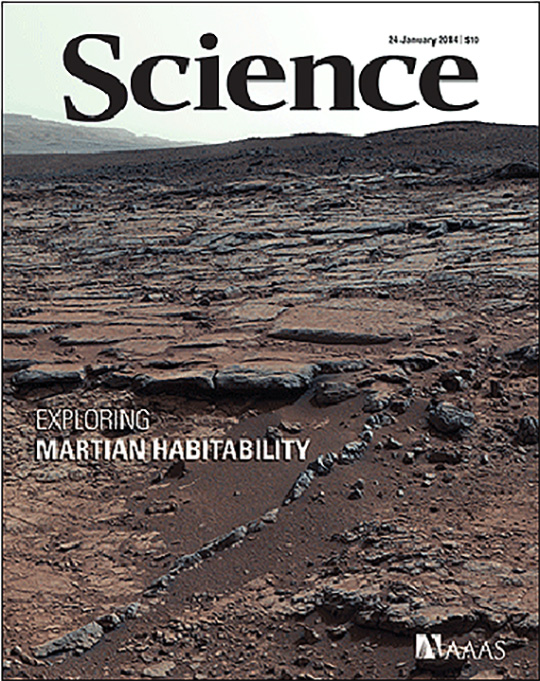
Figure 4. Science cover. Eroded landscape of Yellowknife Bay, Gale crater on Mars. Sheepbed mudstone is seen in the foreground, ~ 4 meters distant from the Curiosity rover camera that took the photo; Gillespie sandstone is in the middle field. The foothills of Mt. Sharp (upper left), ~ 20 kilometers distant, are Curiosity's ultimate destination. Exploration of this region by the Curiosity rover offers evidence of an ancient, potentially habitable environment. Image: NASA/JPL-Caltech/Malin Space Science Systems
A related study revealed a very low concentration of salts in the lake deposits. This finding indicates that the water would have had low salinity (and therefore been conducive to microorganisms), and that clays formed in the depositional environment. Clays would provide a good medium for microorganisms trying to survive in a primordial environment. Elemental data indicate that minimal weathering of the crater rim occurred, suggesting a colder and/or drier climate.
In another paper, researchers noted ChemCam’s ability to provide insight into the chemistry of Martian soils at the submillimeter scale, identifying two principal soil types along Curiosity’s path. ChemCam also supported observations of “Jake_M,” the first rock analyzed with an X-ray spectrometer on Curiosity. ChemCam provides complementary observations to the X-ray spectroscopy and underpins much of the science conducted through Curiosity’s Mars Science Laboratory.
Wind-induced saltation abrasion of the rocks in Yellowknife Bay appears to have been responsible for erosion and exhumation of the ancient lake bed. The process produced a series of rocky scarps that retreated in the downwind direction. During exhumation, any organics would become subject to radiation damage as they entered the upper few meters below the rock-atmosphere interface. Understanding this process led scientists to predict that the rocks closest to the scarps were most recently exhumed and are thus most likely to preserve organics.
In the search for organic remnants of past life, it is helpful to have a paradigm to guide exploration. This begins with assessing habitability, which is the mission of the Curiosity’s Mars Science Laboratory. In addition to understanding past habitability, it is also necessary to determine if the environment was conducive to preservation of organism remains, specifically large organic molecules. Thus, the mission has evolved from initially seeking to understand the habitability of ancient Mars to developing predictive models for the taphonomy (fossilization process) of Martian organic matter and determining where to search for the signatures of life.
Papers published in Science earlier were also linked in the magazine’s on-line presentation of this compendium of breakthrough science on the ancient Martian environment and its suitability for supporting life. Piecing together the ancient environment of Mars is a scientific detective story in which small bits of evidence link to create a broad, consistent picture of the past. As Curiosity keeps cruising the planet, ChemCam continues zapping and analyzing rocks, and the rest of the MSL instrument suite collects new data, the revelations are sure to keep arriving and astounding.
References:
An international team of researchers authored the papers. Los Alamos researchers included Samuel Clegg and Agnes Cousin (Chemistry Division), Dorothea DeLapp, Robert Dingler, Ryan Jackson, Stephen Johnstone, Nina Lanza, Cynthia Little, Tony Nelson, and Roger Wiens (Intelligence and Space Research Division); and Richard Williams (Defense Systems and Analysis Division). These are a sub-set of the larger team of LANL personnel and collaborators involved in the ChemCam operations and data analysis.
NASA funds the Los Alamos work, which supports the Lab’s Global Security mission area and the Science of Signatures science pillar. LANL’s remote sensing and detection capabilities have applications from Mars to nonproliferation, space, defense, and intelligence. Technical contact: Roger Wiens
Materials Science and Technology
A new class of hierarchically porous metal materials
Nanoporous metal electrodes display diverse applications in catalysis, sensors, and renewable energy systems. While these materials are valued for their large surface area, a necessary trade-off exists between the design of electrodes with exceedingly small pores and restricted mass transport within the porous structure. Resolving this paradox is crucial for an array of emerging technologies that require materials with both large surface area and rapid transport capabilities (i.e. supercapacitors, biosensors, and high-performance batteries). LANL researchers have developed a simple method to synthesize three-dimensional (3-D) porous gold electrodes possessing structural hierarchy on widely separated length scales. They used a recently discovered class of soft materials known as bijels (bicontinuous interfacially jammed emulsion gels) for the process. The Journal of Physical Chemistry Letters published the research.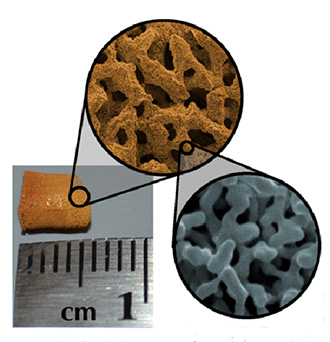
Figure 5. Digital and electron microscopy Images of hierarchically porous gold materials synthesized using colloidal bijels.

Figure 6. Processing route to hierarchically porous gold monoliths using bijels as templates. Method 1: a nanocasting approach. Method 2: A nanocasting and dealloying approach
This simple process illustrates, for the first time, the rational design of a functional porous material derived from a colloidal bijel. Although the use of advanced materials based on bijels has been proposed for a number of engineering applications, evidence of their intended chemical functionality has not been shown previously. On the basis of these results, the LANL team believes that bijels can offer a low-cost and accessible synthesis platform for hierarchically porous metal electrodes with enhanced performance for immediate applications in catalysis, separations, and renewable energy systems, where rapid mass transport and high surface area are often simultaneously required. In addition, these foams are useful for radiation transport experiments in NNSA Science Campaigns.
Reference: “Developing Monolithic Nanoporous Gold with Hierarchical Bicontinuity Using Colloidal Bijels,” The Journal of Physical Chemistry Letters 5, 809 (2014); doi: 10.1021/jz5001962. Researchers include Matthew Lee, Miguel Santiago, Chris Hamilton, and Kim Obrey (Polymers and Coatings, MST-7); Navaneetha Subbaiyan (Center for Integrated Nanotechnology, MPA-CINT); and Juan Duque (Physical Chemistry and Applied Spectroscopy, C-PCS).
NNSA Science Campaign 4 funded the research, which supports the Laboratory’s Nuclear Deterrence and Energy Security mission areas and Materials for the Future and Science of Signatures science pillars. Technical contacts: Kim Obrey and Matt Lee
Physics
Researchers publish first reference book on MRI at extremely low magnetic fields
For a decade Los Alamos physicists have explored ways of mapping the anatomy and function of the human brain using ultra-low field (ULF) nuclear magnetic resonance (NMR) and superconducting quantum interference device (SQUID) sensors. Now, four of those innovators have written a 264-page reference book, which they hope will encourage researchers to explore this emerging field. Ultra-Low Field Nuclear Magnetic Resonance: A New MRI Regime, to be released in March by Oxford University Press, is designed for scientists involved in SQUID applications, the ultra-low field magnetic resonance imaging (ULF MRI) community, and MRI experts interested in low field or pulsed field methods.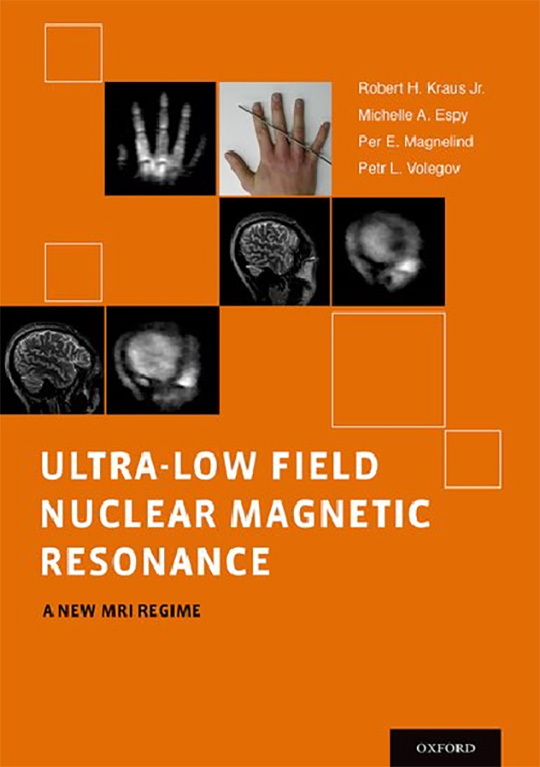
Figure 7. The book cover depicts biomedical applications of MRI at extremely low magnetic fields.
“The group at Los Alamos National Laboratory has been a major driving force in the development of ULF MRI,” wrote John Clarke (University of California, Berkeley/Lawrence Berkeley National Laboratory) in the foreword. “Their efforts are reflected in this book, which covers all aspects of the subject in depth, ranging from history and the nuts-and-bolts practicalities of building such a system to ULF resonance phenomena and applications of a variety of imaging techniques to pulse sequences and direct neural current imaging. The book is surely destined to become the standard reference in the field.”
The authors include Robert H. Kraus Jr. (formerly Applied Modern Physics, P-21; now Samitaur Medical Technologies), Michelle A. Espy, Per E. Magnelind, and Petr L. Volegov (P-21). More about the book:http://global.oup.com/academic/product/ultra-low-field-nuclear-magnetic-resonance-9780199796434?q=9780199796434&lang=en&cc=us. More about the origins of SQUID magnetometry at LANL: www.lanl.gov/quarterly/q_spring03/squid_text.shtml.
LANL’s Laboratory Directed Research and Development (LDRD) program, National Institutes of Health, U.S. Department of Homeland Security, and Samitaur Medical Technologies funded different aspects of the SQUID team’s research. The work supports the Lab’s Global Security mission area and the Science of Signatures science pillar. Technical contact: Michelle Espy





